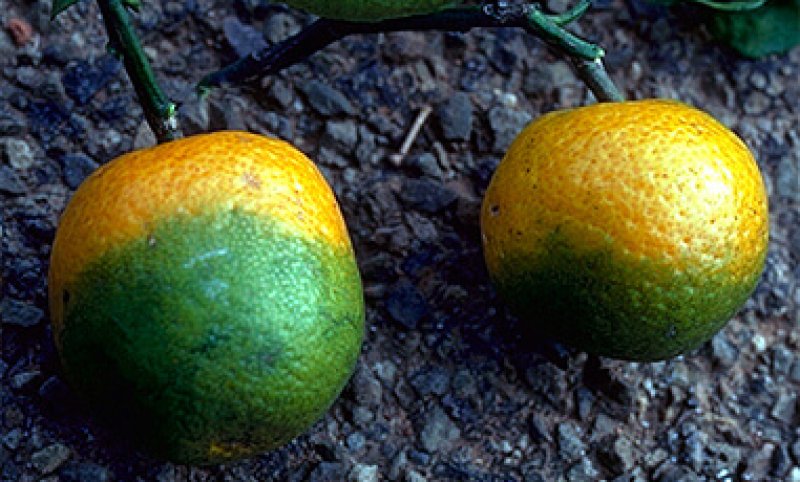For the past decade, Florida’s oranges have been literally starving.
Since it first appeared in 2005, citrus greening, also known by its Chinese name, huanglongbing, has swept across Florida’s groves like a flood. With no hills to block it, the Asian citrus psyllid—the invasive aphid relative that carries the disease—has infected nearly every orchard in the state.
By one estimate, 80 percent of Florida’s citrus trees are infected and declining. The bacterial disease incubates in the tree’s roots, then moves back up the trunk in full force, causing nutrient flows to seize up.
The disease has spread beyond Florida to nearly every orange-growing region in the United States. Despite many generations of breeding by humanity, no citrus plant resists greening; it afflicts lemons, grapefruits, and other citrus species as well. Once a tree is infected, it will die.
Yet in a few select Floridian orchards, there are now trees that, thanks to innovative technology, can fight the greening tide. These trees have the potential to keep Florida orange juice on your breakfast table—provided you are willing to drink the juice of oranges that have been genetically modified to contain genes from spinach.
Before field trials, plant pathologist Erik Mirkov first tests his biotech trees in a much more severe environment than the trees would see in real life, yet by the second and third generations, his greening-resistant orange trees continued to thrive even after 16 months in the greenhouse.
Field trials have also met with success: Some of his first-generation trees are resisting the disease to some degree, even after five years; a much larger trial of second- and third-generation trees is going well after almost two years.
Southern Gardens is now seeking to deregulate these oranges for free use, a long process that requires approval from the Environmental Protection Agency, the Department of Agriculture, and the Food and Drug Administration. It’s a process that tends to dissuade academic scientists; except in a few rare cases, like genetically modified papaya in Hawaii, only wealthy seed companies pursue deregulation of biotech crops.
So just how long will it take? Barring a long regulatory holdup—far from a sure bet—the first commercial planting should come in three to four years, says Mirkov.
Read the full, original story: Can genetic engineering save the Florida orange?































